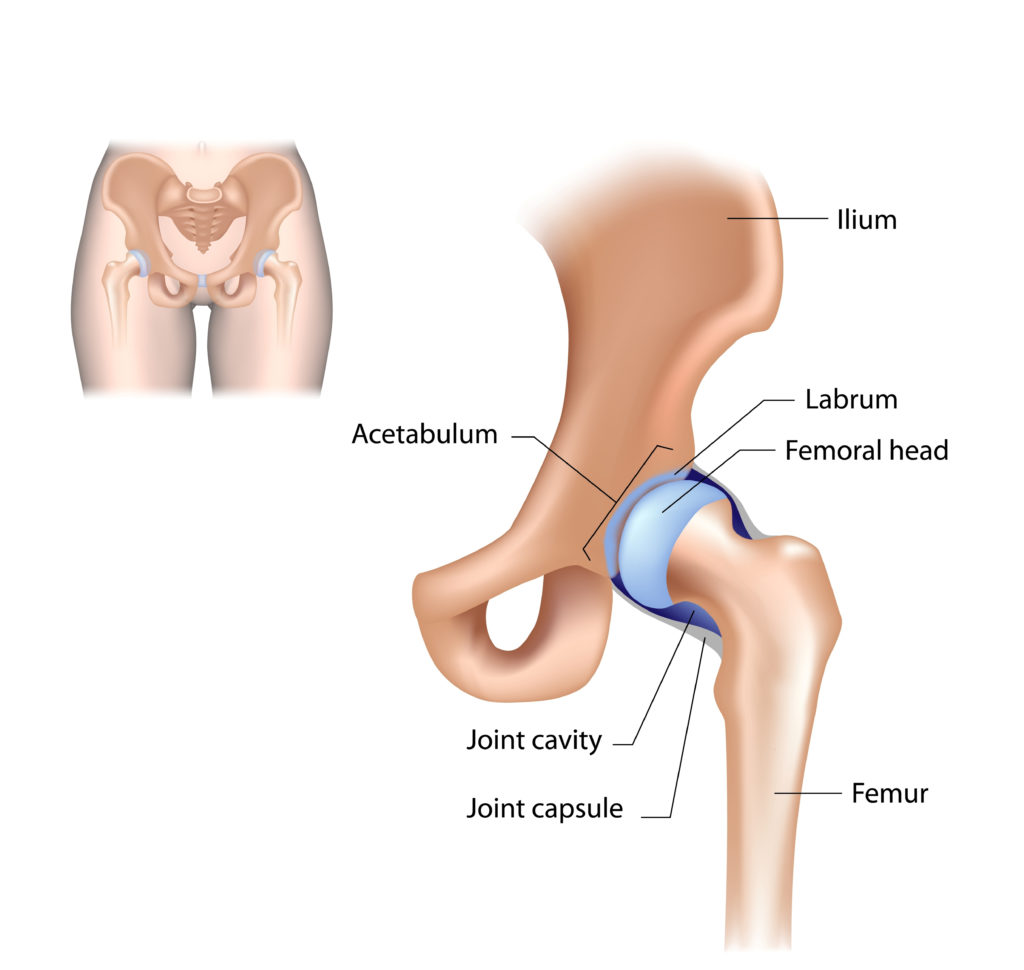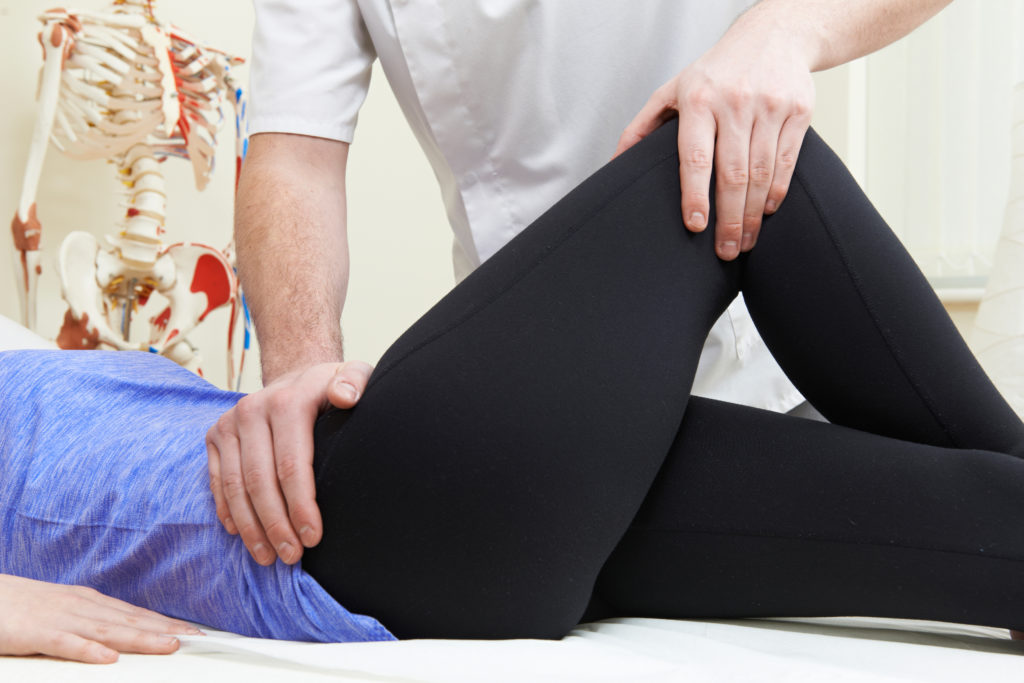Hip
Anatomy
The hip – or coxa – is classified as a ball-and-socket joint and it is called the femoroacetabular joint. It gets its name because this joint is between the top of the femur (thigh bone) and acetabulum of the pelvis.
The hip provides stability for support of the head, arms, and trunk to facilitate weight-bearing functions like squatting and walking. It is structurally designed for this purpose by the deep socket of the acetabulum compared to the shallow socket of the glenoid in the shoulder. Connective tissue like the labrum and muscles add more reinforcement to this joint.
Its joint classification gives it more directions of movement compared to a joint like the knee, which is a hinge joint. Unfortunately, more degrees of movement allow for more injury opportunities.

Common Causes Of Hip Pain
The cause of hip pain can be traumatic such as after a fall or motor vehicle accident or non-traumatic. Non-traumatic injuries can be from overuse or repetitive motions, but sometimes it can be congenital (the way you were born). Congenital variations in the orientation of the femur can change the angle and/or rotation affecting your standing posture or gait (walking pattern).
For example, if you’re someone that walks more duck-footed (retroverted) or pigeon-toed (anteverted) then there’s a variation in the amount of rotation in your femoral head. In addition, if your standing posture looks more knock-kneed (coxa vara) or bow-legged (coxa valga) when standing then there’s a variation in the angle between the femoral head and the shaft. All these things will not only affect how you move – walking, going upstairs – but also how and where you feel pain.
Other causes of hip pain include:
- Osteoarthritis
- Femoroacetabular impingement (FAI)
- Tendinitis
- Internal or external snapping hip syndrome
- Trochanteric or ischial bursitis
- Labral tear
- Legg-Calve-Perthes disease (LCPD)
- Slipped capital femoral epiphysis (SCFE)
- Avascular necrosis (AVN)
- Dislocation
- Ligament sprains or tears
- Muscle strains or tears
- Fractures
- Motor vehicle accidents
- And more
Common symptoms include:
- Clicking/popping
- Swelling or stiffness
- Pain (aching, sharp, dull)
- Difficulty putting weight through affected leg
- Difficulty changing positions in bed or sitting/standing
How Physical Therapy Helps You
Hip pain can be debilitating on your performance, whether it’s at the gym or work. Like most body parts, your symptoms can be local (in the hip region), referred pain from a muscle, or radiating from the spine. A physical therapist can evaluate you to determine the cause of your symptoms to help manage pain, improve mobility, and restore strength.
Following the initial evaluation, your physical therapist will determine and discuss the cause of your pain or issues. Together, you and your physical therapist will set goals specific to your needs and create a plan of care. Your plan of care will help you accomplish your goals and get you back to what you enjoy doing!
Living with pain does not have to be your new norm. Contact us to get a free phone consult and schedule an initial appointment if you’re suffering from hip pain.

480.269.1668